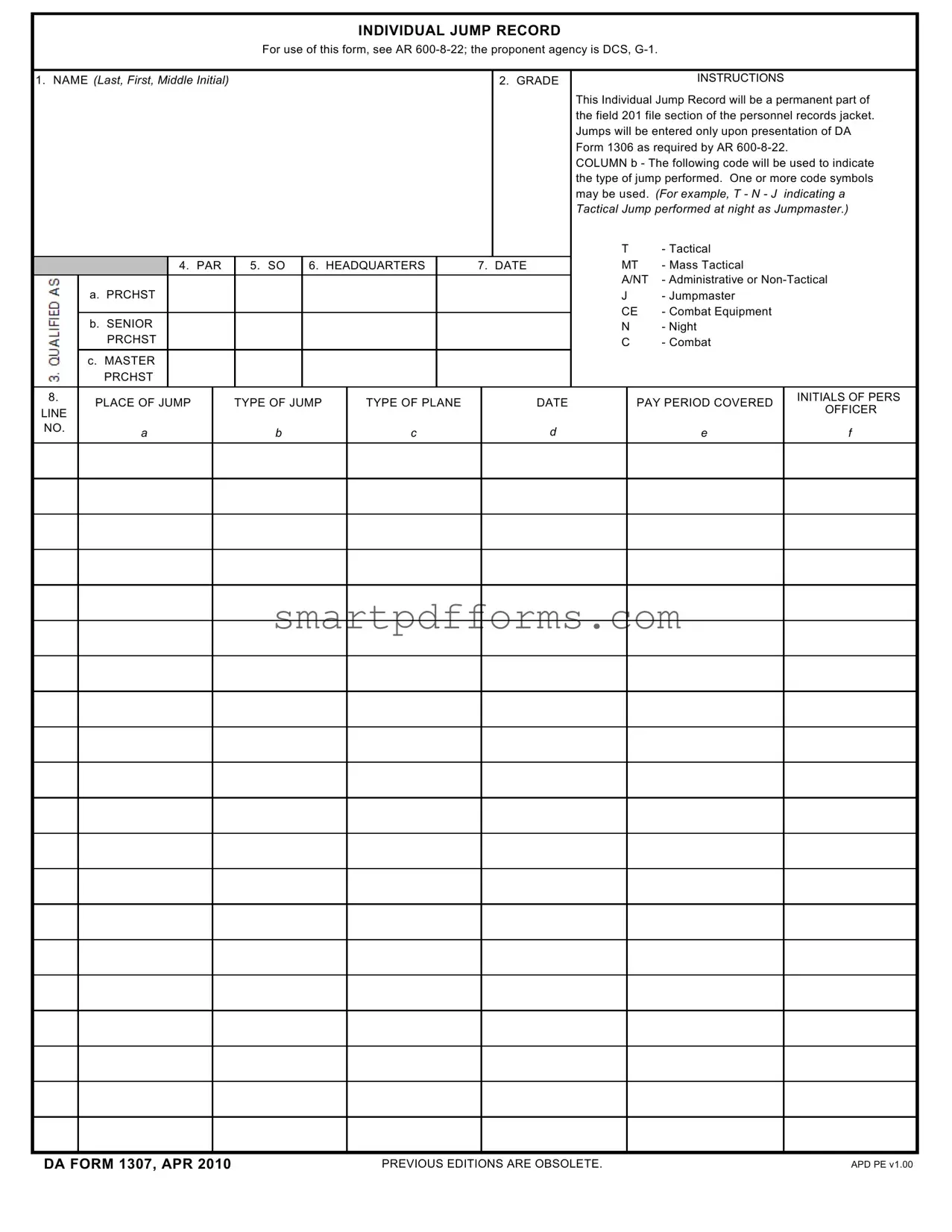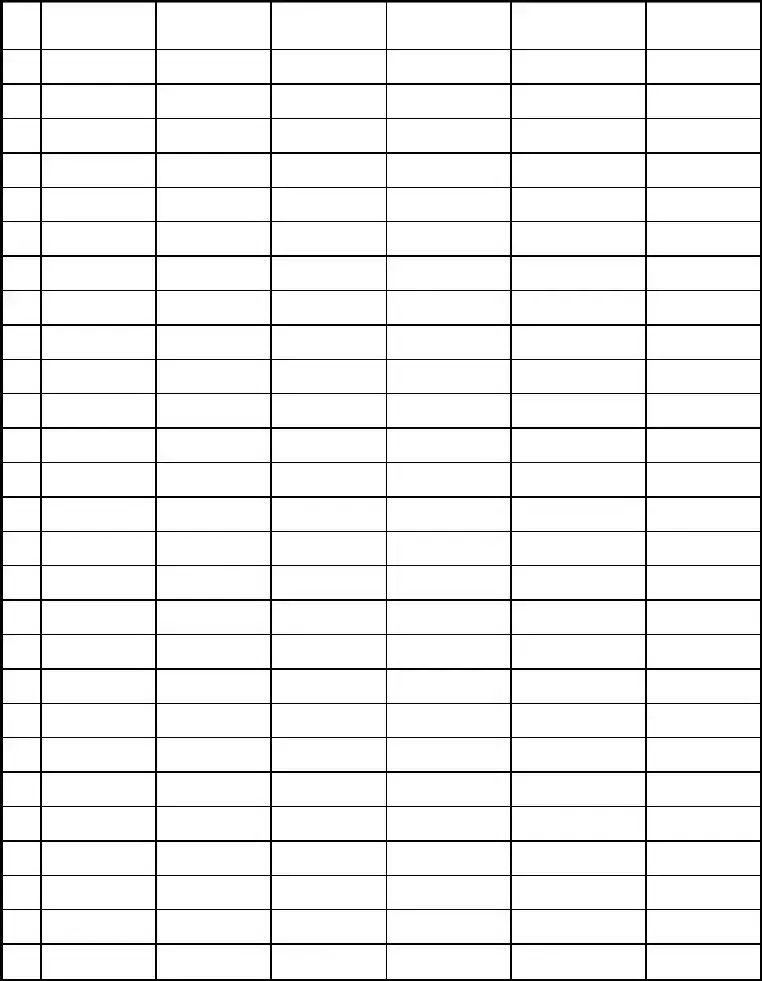Blank Da 1307 PDF Template
The DA Form 1307, known as the Individual Jump Record, serves as a critical documentation tool within the United States Army, mandated for use in accordance with AR 600-8-22, with the DCS, G-1 as the proponent agency. This form meticulously records each parachute jump an individual soldier makes, ensuring a comprehensive history is integrated into their personnel records jacket. Jumps are recorded based on specific codes that illustrate the jump's nature, including tactical, mass tactical, administrative, or non-tactical jumps executed under various conditions such as night or jumpmaster-led.
To maintain an accurate and up-to-date service record, it is crucial for soldiers to familiarize themselves with and accurately complete the DA Form 1307. For detailed instructions on how to fill out this form, click the button below.


